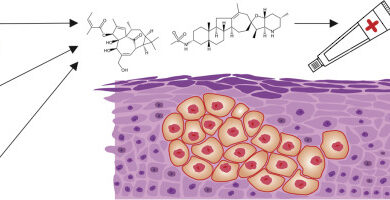What are the symptoms of heart blockage?

Heart blockage is one of the leading causes of death worldwide. It is important to keep the heart healthy to maintain the overall health of the body and wellbeing. There are many risk factors such as high cholesterol levels, high blood pressure, and smoking that may lead to a heart condition. Adopting a healthy lifestyle may help in lowering the risk of heart disease. Although chest pain is one of the most common and important signals for a heart attack, there are many other symptoms that may indicate cardiac disease. One such condition is Coronary Artery Disease (CAD) or Coronary Heart Disease (CHD). In this, the blood vessels that supply the oxygen, blood, and other nutrients to the heart become damaged or diseased.
Overview:
Coronary artery disease results due to plaque formation, which is essentially the cholesterol-containing deposit. The fat, cholesterol, and some other substances combine to form a wax-like substance that sticks to the walls of the blood vessels. It makes the arteries narrower and harder and even can lead to a condition called atherosclerosis. The narrow coronary arteries eventually cause decreased blood flow to the heart, leading to chest pain, shortness of breath, and other symptoms of coronary artery disease. A complete blockage of arteries and untreated coronary artery disease can cause a heart attack. It is important to schedule a health checkup appointment with the cardiologist to regularly monitor an existing condition or visit one so that they can diagnose the conditions of artery diseases.
Symptoms:
It is not possible for the coronary artery to supply oxygen or blood to the heart if it becomes narrow and hard. At first, there may be no symptoms or signs caused by decreased blood flow. Once the plaque continues to deposit in coronary arteries, then it may develop and cause coronary artery disease. Some signs and symptoms are:
Chest pain (Angina):
The plaque deposits may result in severe pain, heaviness, pressure, and tightness in the chest. Also, having a squeezing or burning feeling sometimes can be mistaken for indigestion. The pain generally occurs in the middle or left side of the chest, and it is called angina. The pain goes away within minutes, but sharp or fleeting pain is felt in the neck, back, or arm, especially for women.
Shortness of breath:
It is hard for the heart to pump enough blood for the needs of the body and oxygen to the lungs. It may result in extreme fatigue with strain or shortness of breath. There will be difficulty in breathing even in a simple activity. If the breath is shallow, even without exertion, it is really a cause for concern.
Heart attack:
The corona artery that is completely blocked by plaque will cause a heart attack. Some of the most common symptoms like sweating without obvious reasons, pressure, discomfort, or pain in the chest, arm, jaw, neck, back, or shoulder, shortness of breath without exertion, feeling weak or faint. There are also possibilities that the heart attack may occur without any symptoms or signs.
Incessant cough:
It is not the most common sign of heart problem, but the person with heart disease may pay special attention as there is a possibility of risk. If the incessant cough produces pink or white mucus may a sign of heart failure and that must need an immediate consultation with a doctor. The heart may be unable to pump the blood as the body demands and cause blood leakage back to the lungs.
Swollen legs, ankles, and feet:
It is another sign that shows the heart is struggling to pump blood effectively to the body. If the heart is unable to pump fast enough, it results in getting the blood back up in veins that cause a condition called bloat. It also makes the kidney hard to remove sodium and water from the body that causes bloating.
These are some symptoms of heart blockage, and it is also important to note that sometimes. There may no signs or symptoms and may cause serious health issues in sudden. Regular health checkups can help to find any trouble in the artery.
Treatments and surgical procedures:
Once coronary artery disease is diagnosed, then it is essential to follow a healthy lifestyle along with treatment. Based on the seriousness of the condition, a surgical procedure is needed. It is recommended to manage blood pressure, cholesterol, blood sugar level, following a healthy diet, regular exercise, quit smoking, managing stress to reduce the risk of coronary artery diseases.
Coronary Artery Bypass Grafting (CABG) surgery:
CABG surgery helps to improve the blood flow in the artery to the heart. In this surgery, a graft is created to bypass a blocked coronary artery using a healthy vein or artery from another part of the body. The grafted vein or artery bypasses and goes around the blocked coronary artery. It helps to create a new passage and blood goes around the blockage to the heart muscle. Open heart procedure is followed in this surgery and is also known as open-heart surgery. There are many specialist clinics and surgeons are performing CABG surgery in India.
The medication and lifestyle changes may help to manage coronary artery disease. It is important to follow the instructions of the doctor once the CABG surgery is performed to remove the block. The medication should be followed regularly and also important to follow a healthy lifestyle promptly. In some cases, the heart attack can happen again to avoid that some appropriate measures need to be taken with medical attention.



